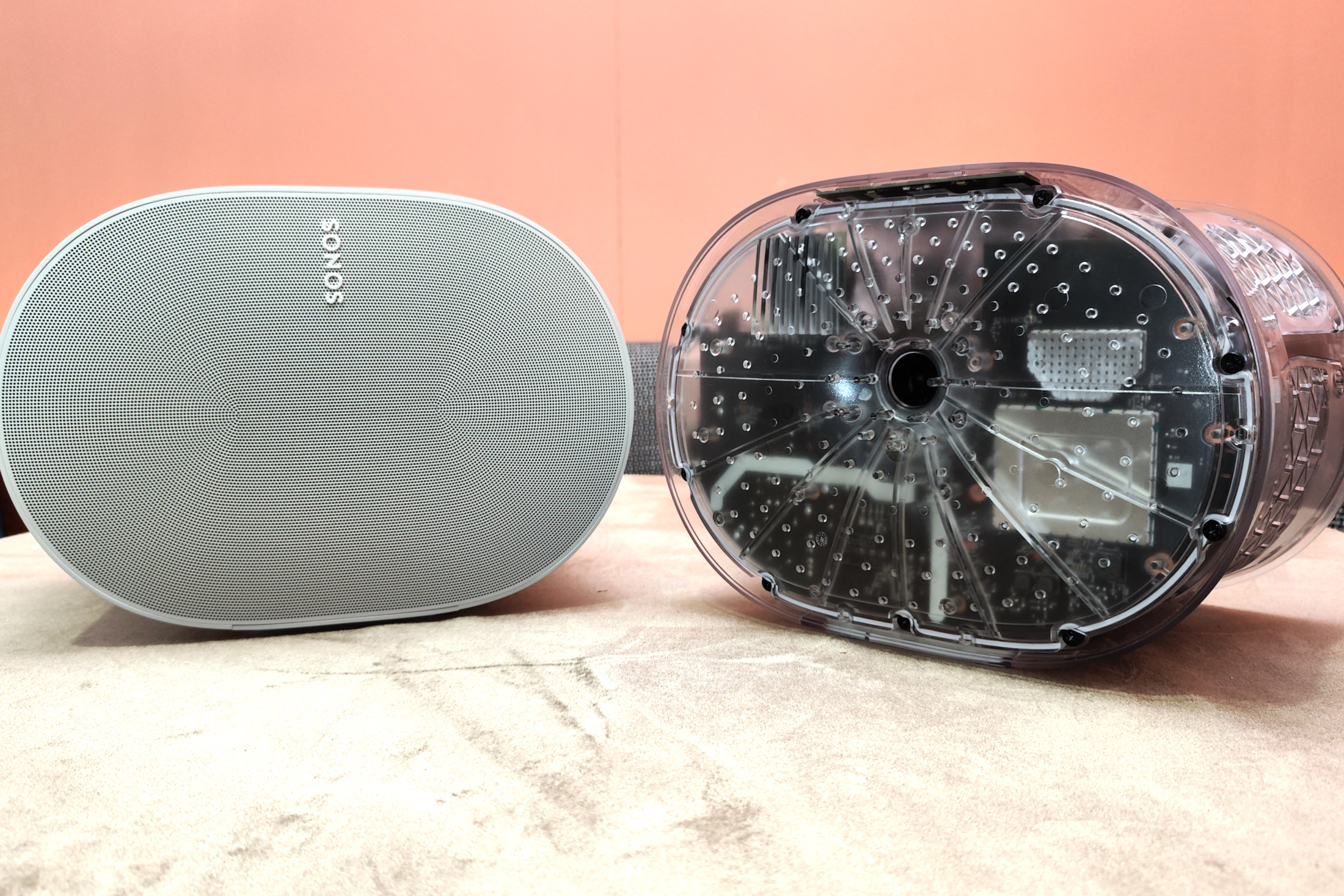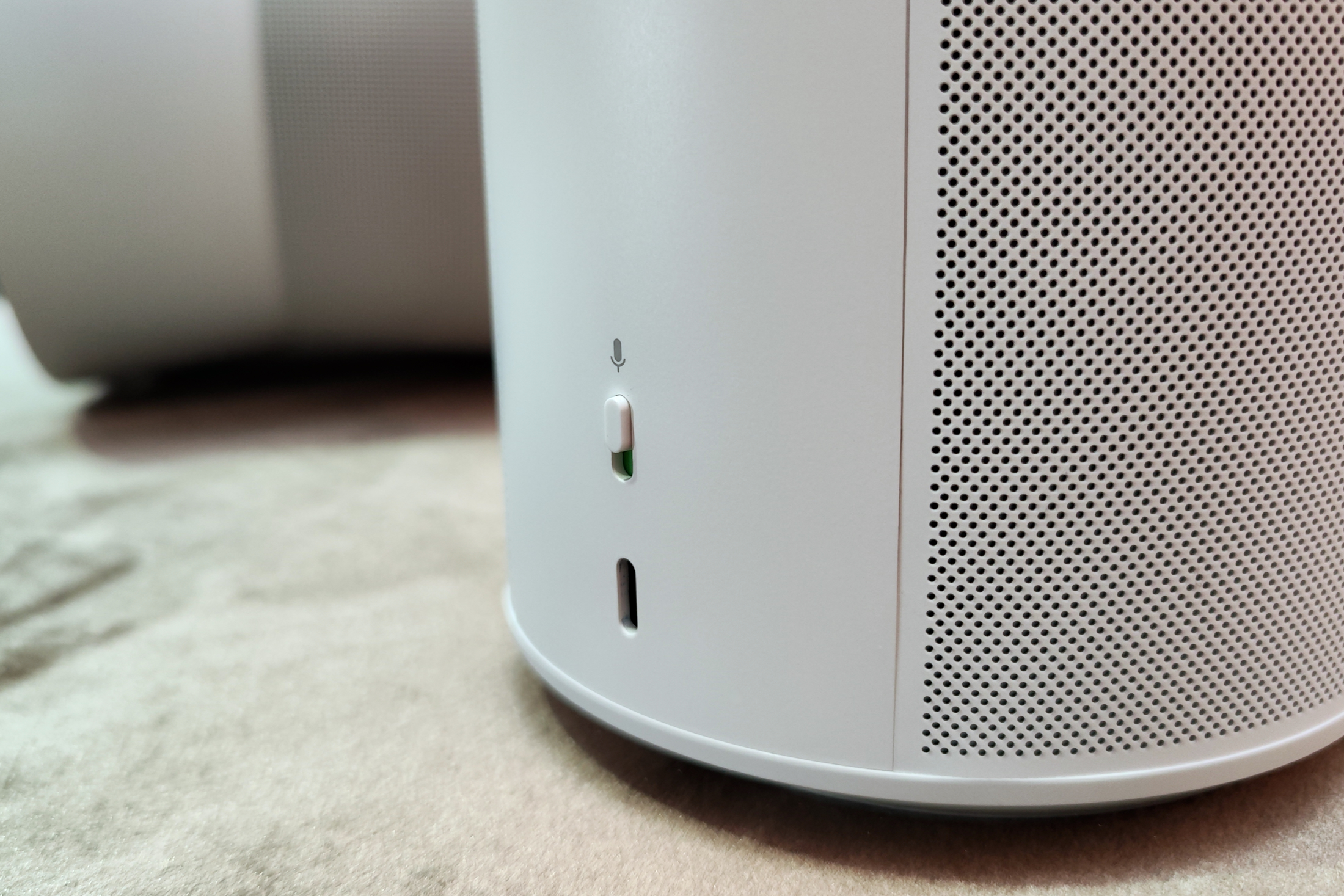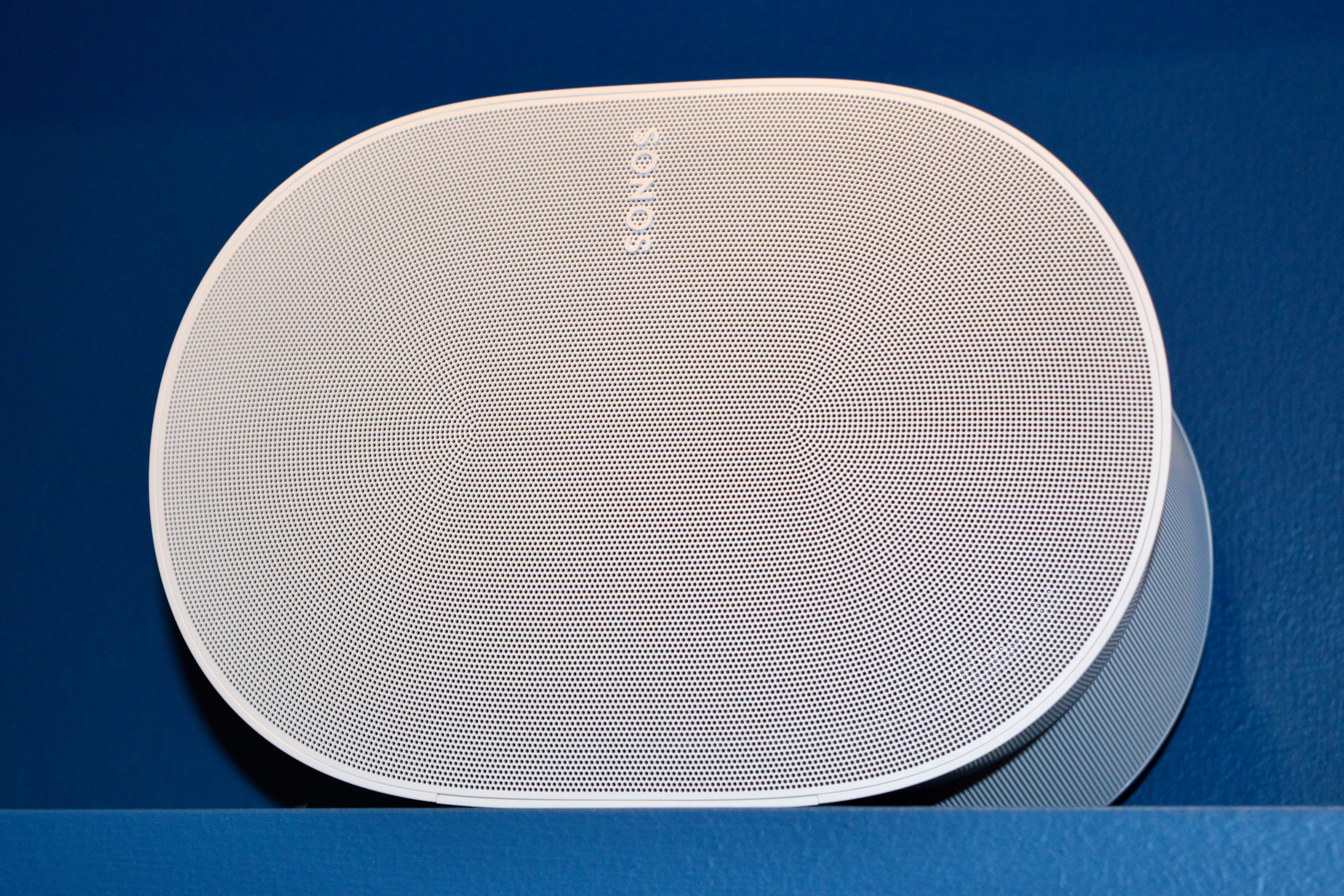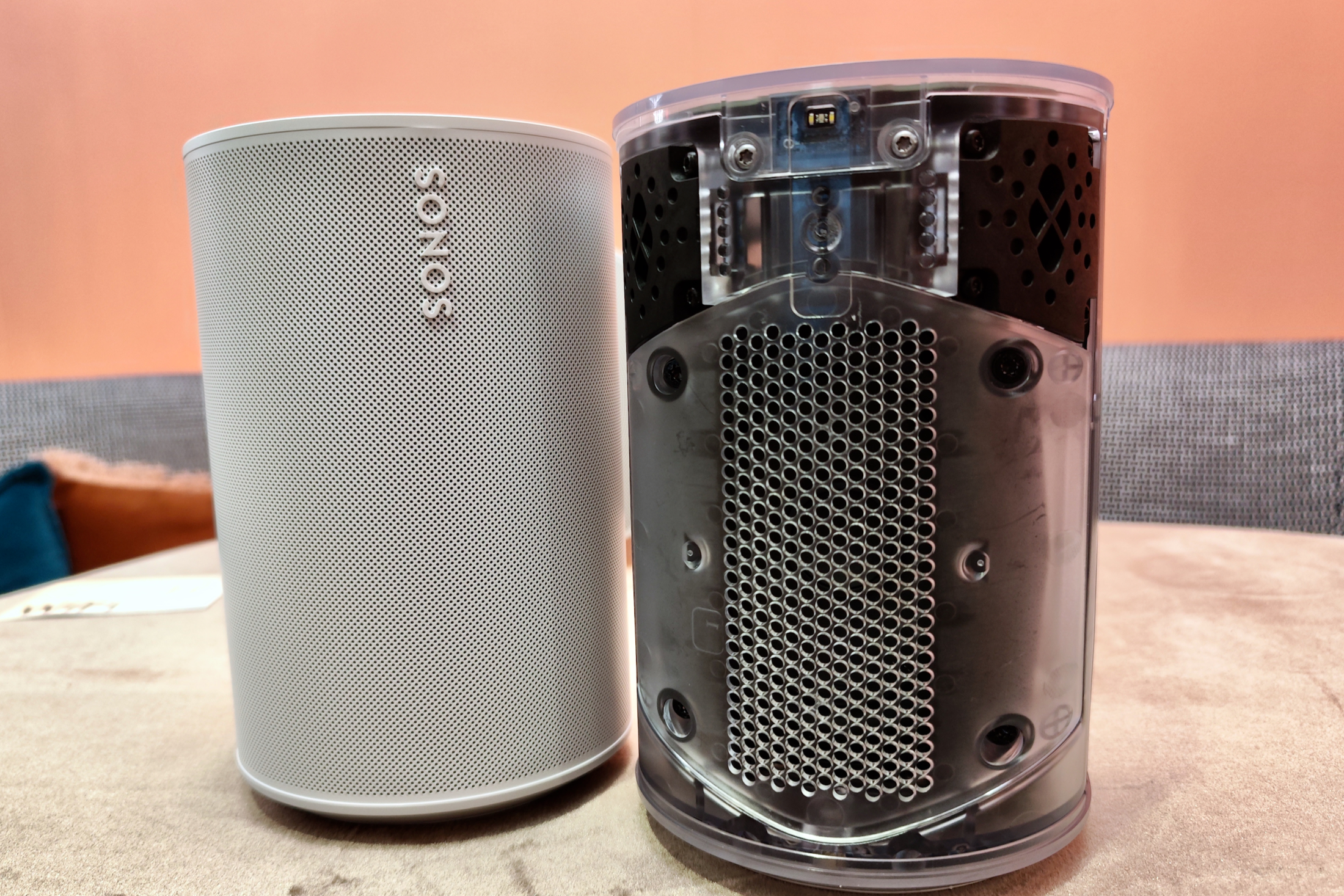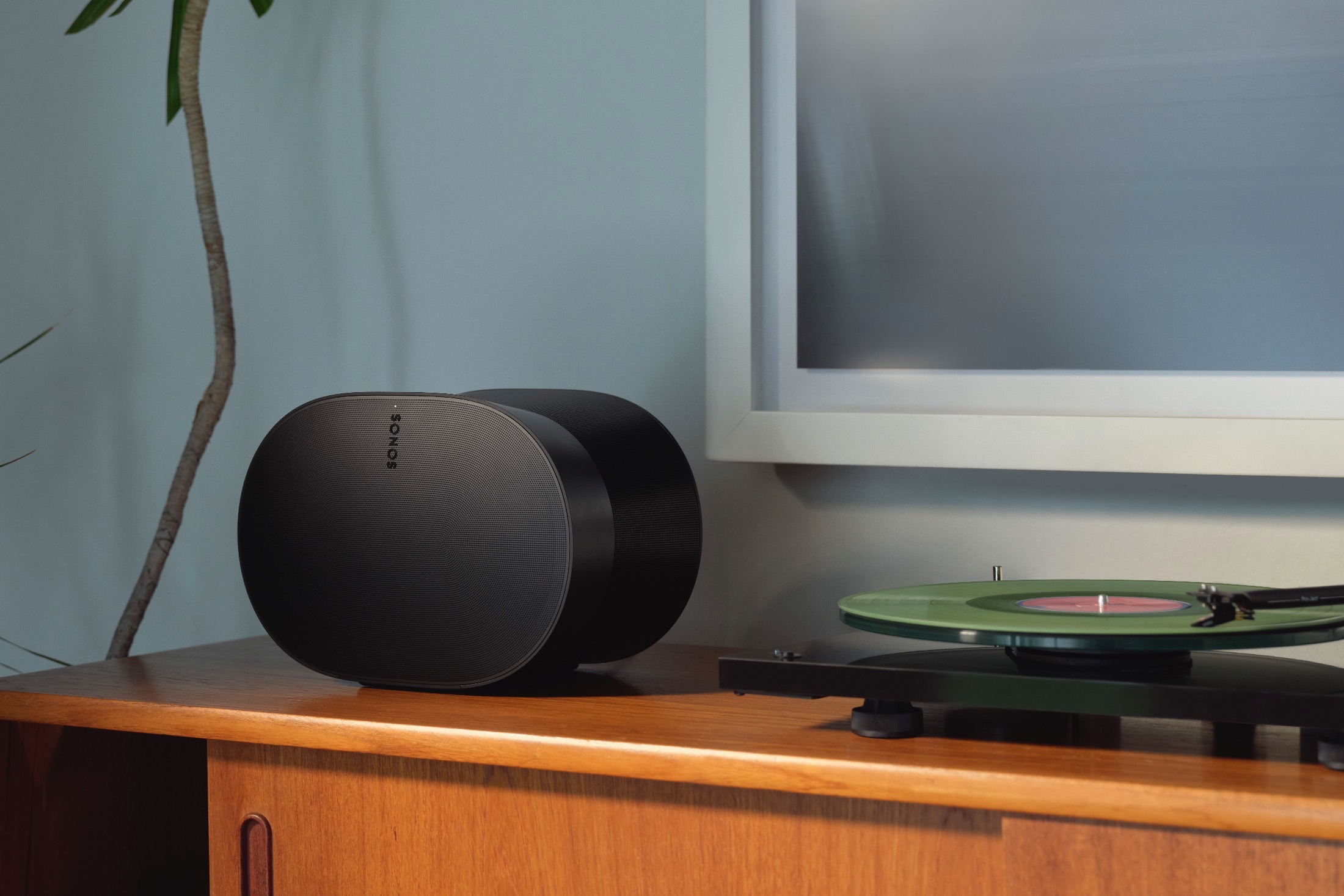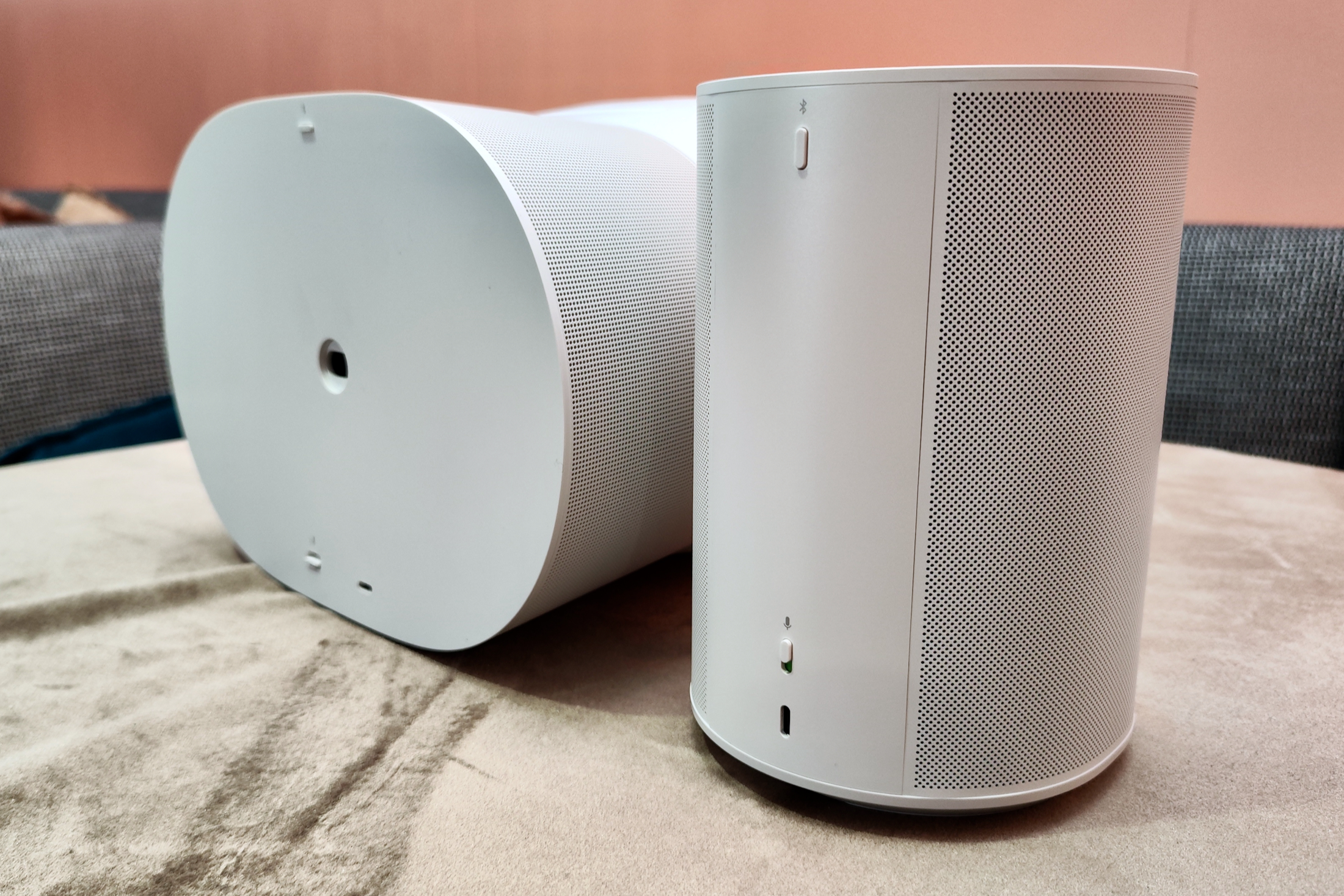Sonos has officially unveiled two new wireless smart speakers — the $249 Sonos Era 100, and the $449 Sonos Era 300. While the Era 100 is effectively a new version of the aging Sonos One, which it replaces, the Era 300 is an entirely new type of speaker for the company, with six drivers (including an up-firing tweeter) and compatibility with spatial audio formats like Dolby Atmos.
The leaks pretty much nailed it. Both speakers will be available on March 28 in 26 countries including the U.S., Canada, Mexico, the U.K., Ireland, Germany, and Australia, with preorders beginning March 7.
Related: Sonos Era 100 and Era 300 first impressions: it’s all about immersion
Sonos says the Era name reflects the fact that the speakers mark a new era for the company, and that’s not just a marketing ploy — the Era 100 and 300 represent a significant departure from Sonos’ previous offerings in a number of ways.
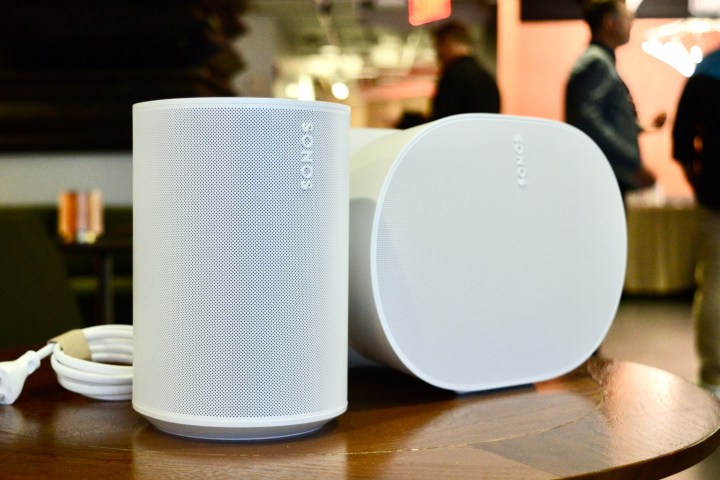
A number of firsts
The Era 100 and 300 mark the first time that Sonos has included Bluetooth 5.0 connectivity in a non-portable speaker, letting you bypass Wi-Fi networks, as well as the Sonos app, for a quick, ad-hoc listening experience. This complements the speakers’ Apple AirPlay compatibility. Thanks to a USB-C port on the back of the devices, customers have the option of adding an auxiliary audio source like a turntable through the use of a $19 line-in adapter or the $39 combo adapter, which adds Ethernet. Until now, only the $549 Sonos Five included an aux-in port.
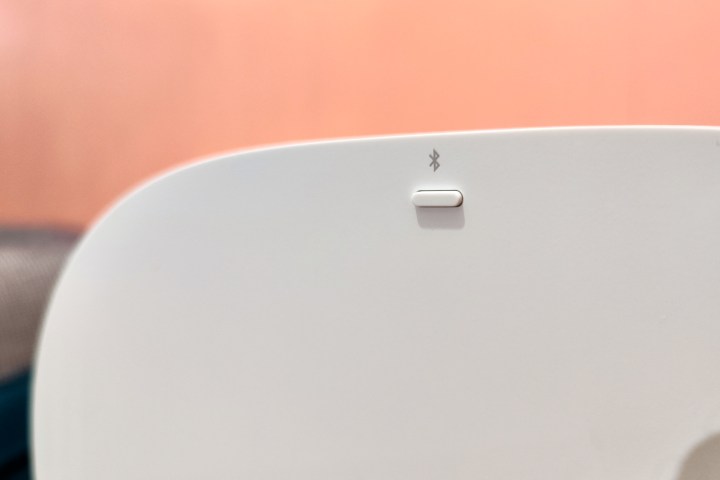
Both the Era 100 and 300 can use their onboard mics to do Sonos Trueplay tuning. Sonos calls this Quick Tuning, and it’s available to both iPhone and Android users from within the Sonos app, marking the first time that Android users will be able to enjoy Sonos’ room-tuning technology on the company’s non-portable speakers. iPhone users can still avail themselves of the more precise Trueplay technique that involves wandering around your room, waving your phone — Sonos now calls this Advanced Tuning.
Unlike the Sonos Move, which can also use its onboard mics for Trueplay, the Era series won’t automatically recalibrate themselves when you move them. If you decide to relocate your speakers, you’ll need re-tune them from within the app.
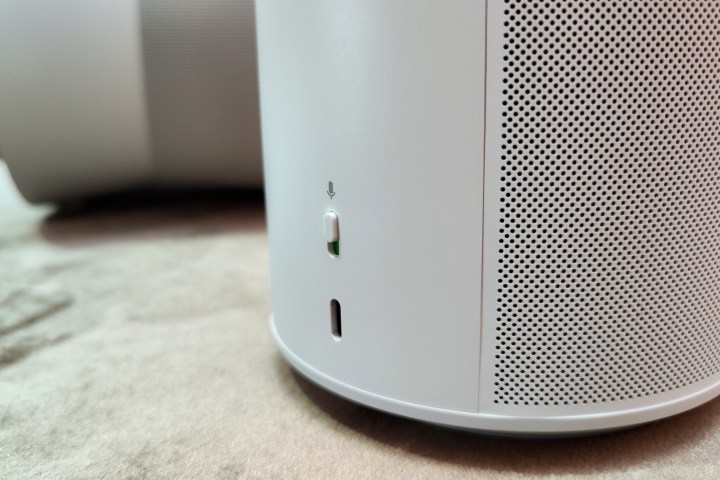
Speaking of the onboard mics, Sonos has declined to say whether or not it plans to sell “SL” versions of the Era Series. For some of its other voice-enabled speakers, SL versions omit the microphones — a choice designed to appeal to people who are uneasy with the idea that their devices might be used to listen to them all of the time. Given that the Era speakers are the first to offer physical mic switches (in addition to a touch control), Sonos may believe that SL versions are unnecessary.
The company has also finally decided to embrace modern Wi-Fi standards. Previous Sonos products were limited to very old protocols. The Sonos Ray, for instance, which launched in 2022, only supports 2.4 GHz 802.11a/b/g/n Wi-Fi connections. The Era series, by contrast, are much further along, with support for not only 2.4GHz and 5 GHz bands using 802.11a/b/g/n/ac, but also Wi-Fi 6, which should help with wireless reliability when you connect them to a Wi-Fi 6 or better router.
For the first time on a Sonos smart speaker, you won’t be able to use Google Assistant on the Era 100 or 300. Sonos says that’s because Google has changed the technical requirements for Google Assistant on third-party devices, but I suspect it may have just as much to do with the fact that these are the first voice-enabled products Sonos has launched since it won a patent lawsuit against Google. Sonos also seems to think that the ball is at least partially in Google’s court. “We remain hopeful that Google Assistant will be part of this ecosystem one day,” a Sonos spokesperson told Digital Trends via email, “but that’s really up to Google.”

Amazon Alexa remains an option, as does the company’s own Sonos Voice Control. And the speakers will still be controllable from an existing Google Assistant-enabled Sonos smart speaker like the Sonos One or the Beam Gen 2.
From a design perspective, Sonos is sticking to its two principal color choices — black and white — with an all-plastic exterior shell and integrated grille. It’s very much a continuation of the design it used on both the portable Roam and the company’s entry-level Ray soundbar. Under that shell, however, Sonos has reduced its use of industrial adhesives by using more screws to fasten components together, which it says will make the speakers easier to disassemble and repair.
Both speakers also possess threaded mounting holes on their bottom panels, something the Sonos One and One SL were criticized for lacking when they launched.
Sonos Era 100

The Era 100 is similar in size to the Sonos One it replaces, but it stands about an inch taller and swaps the One’s rounded-square shape for an oval cylinder look. The key difference between the two products is that the Era 100 can reproduce stereo sound via a pair of angled tweeters. The Sonos One and its predecessor, the Play:1, were both mono speakers. The Era 100 also benefits from a larger midwoofer, which should let the speaker deliver more bass response, and new waveguides, which Sonos claims will produce a wider soundstage.
You’ll be able to use an Era 100 on its own, as part of a stereo pair with another Era 100, or as the surround speakers for a Sonos home theater setup when you have a Sonos Arc, Beam Gen 1 or 2, or Ray soundbar.
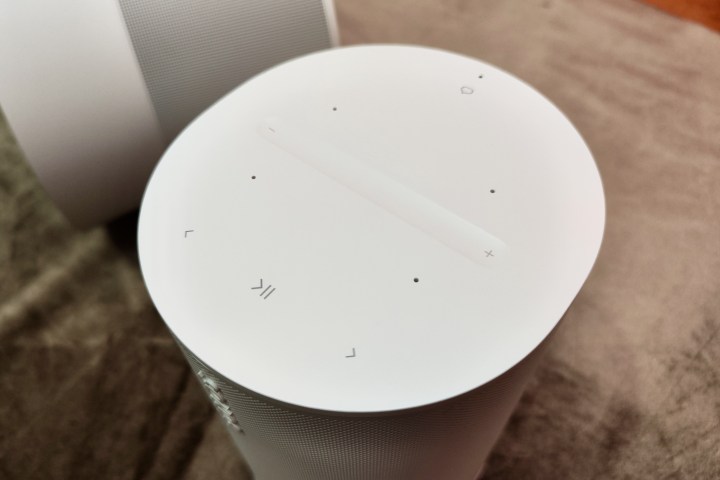
On the top surface are some more changes: Sonos has redesigned its touch controls to make volume adjustments more intuitive by replacing separate volume up/down controls with a single continuous slider strip that runs nearly the speaker’s full width. Track-skipping controls now get their own dedicated touch areas instead of requiring swipe gestures, which could sometimes be tricky to perform. As with previous voice-enabled Sonos products, there’s the option to defeat the onboard microphone for privacy, but now it’s a physical switch located near the bottom of the speaker on the back panel, instead of a touch control.
Sonos will still sell its remaining inventory of the Sonos One and Sonos One SL. But after that, the company will only sell the Era 100.
Sonos Era 300

The Era 300, with its hourglass shape, is like no other Sonos speaker we’ve seen. Those deeply flared sides contain four of the speaker’s six drivers: two side-firing woofers mounted in the lower half of the shell and two side-firing mid-tweeters, which occupy similar positions in the top half. A third mid-tweeter fires sound directly toward the listener from the front grille, while a single, horn-loaded up-firing tweeter sits on top of the speaker to provide the overhead effects that have become the trademark of spatial audio formats like Dolby Atmos.
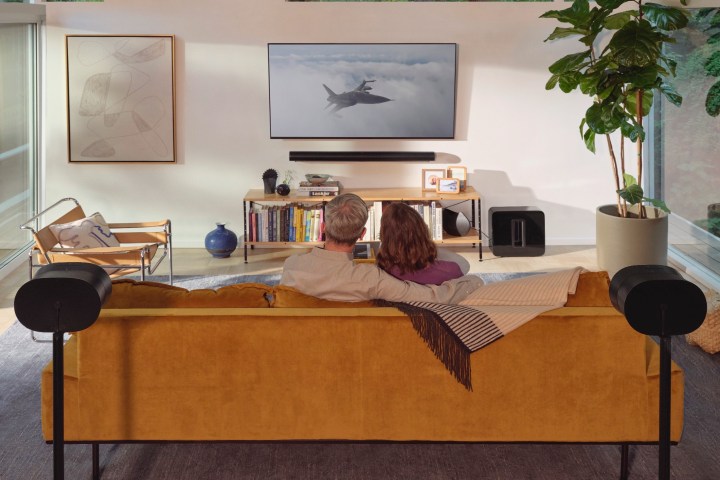
Dolby Atmos probably is best known as a 3D immersive surround-sound format for home theaters. Just like Sonos’ other non-portable speakers, a pair of Era 300s can be used as a set of home theater surrounds (if you combine them with a Sonos Arc or Sonos Beam Gen 2, they’ll supercharge your system with up to 7.1.4-channel sound). But Sonos is putting a big emphasis on the 300’s ability to unlock Dolby Atmos Music, which does for music what theatrical Atmos does for movies.
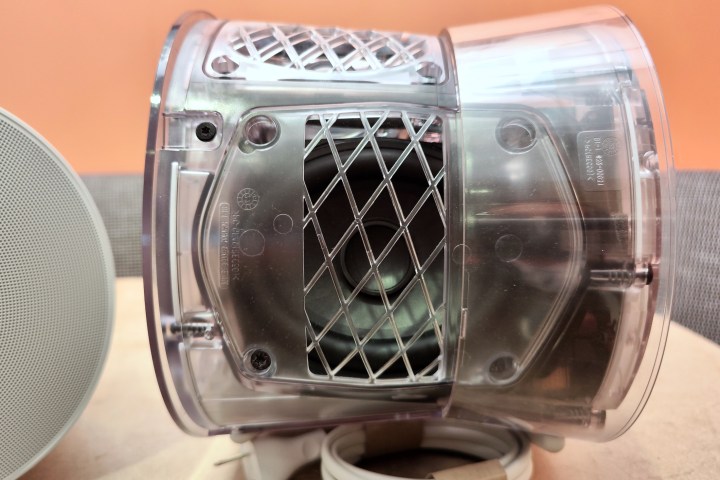
Used alone or as a stereo pair, the Era 300 can decode and play Dolby Atmos Music tracks from streaming music services. When full availability begins on March 28, it will work with Atmos Music content from Amazon Music Unlimited and Apple Music, with other services planned for the near future. Sonos has also said it is adding support for spatial audio tracks from Apple Music on its other Atmos-capable devices (the Arc and the Beam Gen 2) beginning March 28.
The Era 300 is the first non-soundbar Dolby Atmos speaker with a dedicated up-firing driver. Amazon’s Echo Studio and Apple’s HomePod Gen 2 both support Dolby Atmos for movies and music, but these speakers use digital signal processing (DSP) to virtualize Atmos’ height component.
Before you ask: no, you can’t connect an Era 300 to a TV for Dolby Atmos sound. There’s no HDMI port, which is needed to transmit Atmos over a wired connection. Sonos feels that both the Arc and the Beam Gen 2 represent better options if you want to elevate the immersion of your TV’s sound system.
What also remains to be seen is whether Sonos will open the Era 100 and 300 to digital audio sources. At the moment, the company has characterized the USB-C port as an input for analog audio (and/or Ethernet if you buy the optional combo dongle that will be available), but in theory, it could also be used as a digital line-in from a phone, portable media player, or even a CD player.
In addition to the two dongles, Sonos has created wall mounts (Era 100, Era 300) and stands (Era 100, Era 300) to go with the new speakers that take advantage of the single/double threaded mounting holes on the bottom of each unit.
Editors' Recommendations
- Spatial audio via headphones: how science crams 9 speakers and a subwoofer inside your head
- HEOS app refresh adds some of Sonos’ best features
- JBL’s retro-style wireless speakers could spark serious envy among Sonos fans
- Dolby Atmos FlexConnect could eliminate home theater soundbars and HDMI cables
- I had to try the Sonos Era 300 for myself and wasn’t ready for what happened

